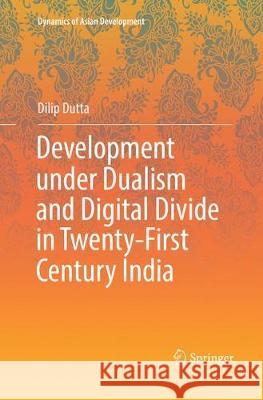Development Under Dualism and Digital Divide in Twenty-First Century India » książka
topmenu
Development Under Dualism and Digital Divide in Twenty-First Century India
ISBN-13: 9789811348600 / Angielski / Miękka / 2018 / 211 str.
Kategorie:
Kategorie BISAC:
Wydawca:
Springer
Seria wydawnicza:
Język:
Angielski
ISBN-13:
9789811348600
Rok wydania:
2018
Wydanie:
Softcover Repri
Ilość stron:
211
Waga:
0.41 kg
Wymiary:
23.37 x 21.59 x 1.02
Oprawa:
Miękka
Wolumenów:
01











